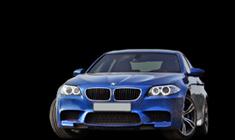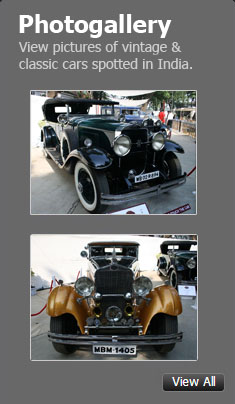News
2020 Hyundai i20: 22 observations after a day of driving
12th November 2020, 11:06 by Tushar Kelshikar
Aditya spent a day with the 2020 Hyundai i20. Here are his quick & brief observations:
- Overall, Hyundai have done a good job with the new i20. There is a range of engines and gearboxes to choose from. The star performer is the 1.0L turbo-petrol from the Venue, which makes the i20 quite a hot hatch. The ride is compliant and the handling is neutral. Besides, the car is loaded with features such as sunroof, Bose 7-speaker sound system, Blue Link telematics with 50 connected car features and over-the-air map updates, hill assist control, 6 airbags, fully digital instrument cluster with TPMS, rear air-con vents, wireless charging with cooling pad, air purifier, tilt & telescopic steering, ambient lighting and more. There’s a 5-year Wonder Warranty available as well. On the downside, many BHPians have found the higher variants to be overpriced - no doubt, this is an expensive hatchback with the top AT costing 13 lakhs OTR Mumbai (more in Bangalore).
- While the interior space and quality are good, the rear seat is placed low and its under-thigh support is compromised. Features such as an auto-dimming IRVM, auto wipers and split folding rear seats are missing. Another complaint we have is that the 195/55 section tyres run out of grip easily. An upgrade to better quality rubber is highly recommended.
Exterior
- The car looks good from the front. It’s neutral and unlikely to offend anyone. The rear end is exactly the opposite with weirdly shaped tail-lamps and a chrome strip running between the 2 light clusters - the derrière will divide opinions for sure. By and large, the car feels well put together. The bonnet, hatch & doors have some weight to them. The paint quality is top notch and fit & finish are best in the segment. Shut lines are nice and consistent - as expected from Hyundai.
- The new i20 draws a lot of attention from other road users. Since the i20 has been a popular car, people want to know more about the new model. Brand loyalty is strong here.
Interior
- On the inside, there are no soft touch materials used anywhere. It's all hard plastic, yet everything seems to be of good quality. The black dashboard with red inserts (in dual-tone body colours) looks very sporty. The sunroof prevents things from getting too dark. Space is good and the ergonomics are spot-on. I was at home in a matter of seconds of entering the cabin. The driver's seat offers enough support and with the sliding armrest, one can get comfortable in quick time.
- At the rear, there is more space than before. The problem is that the seat is placed very low. You have to sit down in this seat. Under-thigh support is compromised.
- As with most new cars, the i20's head-unit is now tablet-like. It's a 10.25-inch HD unit with Blue Link telematics, Apple CarPlay, Android Auto and a Bose 7-speaker sound system. Sound quality is good for a stock system.
- The climate control is very effective and chills the interior in seconds even on a hot day. The rear air-vents help matters further.
Driving the 1.0L Petrol AT
- The i20 petrol is powered by Hyundai’s in-house developed 998cc, 3-cylinder turbocharged engine. It's called the Kappa 1.0 Turbo GDI, and gets a direct injection fueling system, electronic wastegate actuator, a variable oil pump, oil spray jets for the pistons from the crank side and dual variable valve timing. This is the same engine that is used in the Venue. The 1.0L petrol produces a strong 118 BHP (@ 6,000 rpm) and 172 Nm (1,500 - 4,000 rpm). That power figure puts it ahead of its direct rivals, but the Polo 1.0L TSI matches it on torque.
- Hyundai is offering a 7-speed DCT as an option with the i20 1.0L petrol. The company has always been big on automatic gearboxes in India (right from the original Santro). The DCT is available only in the Asta and Asta (O) trim levels. Both are equipped with hill-start assist and electronic stability control.
- The i20 AT is the only car in the segment with a DCT. 7 ratios also result in a superior spread of gearing and this transmission does feel decidedly superior to its rivals, but sadly, there are no paddle shifters. The DCT gearbox is smooth and the entire package is very refined. On the flip side, it is substantially more expensive than its rivals.
- The i20 DCT is very refined at idle. It moves off seamlessly from a standstill. There is a slight initial lag though, as there is no torque-converter & due to the turbo-charger. Once you're moving, light accelerator input is all you'll need to commute in the city. The gearbox moves up early, while shifts are quick and smooth. Driving with a light foot, you'll never even know that the gears are being changed. They are almost imperceptible. The turbo-petrol offers enjoyable acceleration, while the power & torque on tap make the gearbox's job easier. We also liked how the gearbox is never found hunting for gears. Combine this smooth AT with the light steering, excellent ergonomics & clean frontal visibility and you have a sweet city ride. For bumper to bumper traffic conditions, there is a fair amount of 'crawl' available too. Just lift your foot off the brake pedal in 'D' and the i20 will crawl forward, allowing you to drive in bad traffic with just one pedal (the brake). Downside? The i20 DCT is reluctant to downshift from 2nd -> 1st. Hence, you'll need to be patient if you want to suddenly close a gap in slow traffic (as an example).
- Thanks to the powerful engine, the i20 DCT is a fast expressway cruiser. You can easily hit silly speeds and the mid-range is punchy. It sure comes in handy for overtaking. For long distance cruisers, the engine spins @ 2,600 rpm at 120 km/h (100 km/h = ~2,100 rpm). Kickdown response time is average. If the revvs are low, it takes a second or so for the gearbox + turbo to react. Sometimes, you'll find the gearbox to be hesitant to downshift too. But once the AT & turbo respond, this thing is very peppy. Will add that, when the engine is in the meat of the powerband, the reaction times are far lesser.
- The 7-speed DCT shifts faster than most of the gearboxes used by its rivals. Just wish Hyundai had given it paddle shifters. Manual mode is useful when you want to prepare the car for overtaking a fast vehicle on a 2-lane highway, or when you desire engine braking. Move the gear lever to the right to engage manual mode. The response time to your commands is quick. What we found disappointing was that, even here, you can take the revvs to just ~6,500 rpm (which is the start of the redline) before the transmission shifts up on its own. What is impressive is that, you can downshift even with the revvs at 3,800 rpm, which is more than most other ATs allow you to do.
- We'll keep our fingers crossed on the long-term durability of this gearbox. While it's reassuring to have a manufacturer with a track record for reliability backing it, the fact is that no dual-clutch gearbox has had a clean reputation in India. Not Ford's DCT, and certainly not VW's notorious DSG. We'll be keeping a keen eye on reports from i20 owners. Be sure to take that extended warranty package!
- Coming to NVH levels, the i20 does very well at slow speeds and around town. On revving, you can hear that familiar 3-cylinder thrum though. While this noise is there, it is not excessive. There’s almost no engine sound heard in the cabin if you're driving in a calm manner. Even while cruising on the highway, the engine is silent enough. What we appreciated is that the motor actually sounds nice when revved hard. Enthusiasts will like. Around 3,500 rpm, the engine gets audible, and is l-o-u-d above 6,000 rpm. Wind noise is minimal at 100 km/h, while road and tyre noise are par for the course.
- In terms of fuel economy, the i20 turbo-petrol DCT carries an ARAI rating of 20.25 km/l.
Ride & Handling
- The i20 uses a McPherson strut suspension with coil springs at the front and a coupled torsion beam at the rear. The suspension tune is sorted & owners will be satisfied. Low speed ride quality is compliant & mature, with small bumps being absorbed well. While the suspension feels firmer than the old i20, it is not excessively so. Only the bigger potholes make their presence felt inside. The car feels quite comfortable on the expressway as well. While our test car was equipped with 16" wheels, lesser variants get 15" rims with taller rubber which will be cushier.
- Out on the open road, straight line stability is excellent, while the handling is neutral & predictable. It's no VW or Ford, yet the behaviour is sorted. The i20 remains composed through fast corners too. There is some body roll, but it's controlled. The dynamics are clean with no nasty surprises at all, although again, it doesn't dismiss mid-corner bumps like a Polo does. Important to note that the Asta (O) and DCT variants are equipped with electronic stability control (ESC) which can be a lifesaver in emergency situations.
- The grip provided by the 195/55 Ceat Secura Drive tyres is acceptable for regular drivers. Enthusiasts with a hard driving style will want to upgrade to stickier rubber.
- The electric power steering is light and butter-smooth at parking / city speeds. Along with its small size, this makes for a very easy car to drive in urban conditions. On the highway, the steering is not nervous. Those days of crazy Hyundai steerings are gone. The steering weighs up alright at speed and it's not overtly sensitive either. No owner will complain. The car's behaviour is overall neutral in nature, as one would expect a mass market hatchback to be.
- All variants of the i20 come with disc brakes at the front and drums at the rear, with ABS + EBD. The brakes perform as expected. The car stops in a straight line sans drama when braking from high speeds.
- Tags:
- Indian
- Hyundai
- Launches & Updates
- i20




.jpg)
.jpg)


.jpg)
.jpg)
















